Saint John The Baptist – John the Forerunner

Saint John the Baptist – Leonardo da Vinci
Saint John the Baptist’s main Feast Day, celebrated by The Greek Orthodox Church, is “The Synaxis of Saint John the Forerunner”, on the seventh of January.
Saint John the Baptist, who was a Jewish travelling preacher, is not only a major Saint in Christianity but is known as a prophet in Islam, Baha’i (Persian Monotheism) and Mandaeism (Gnostic religion), and is the last prophet of The Old Testament.
In The New Testament, Saint John the Baptist prophesied the coming of The Messiah, a person far greater than himself: Jesus Christ, which is why, in The Greek Orthodox Church, he is also called, Saint John the Forerunner (Ioannis O Prodromos); the one who prepared the way for the coming of Jesus Christ.

Saint John the Baptist – Details from Deesis mosaic, Hagia Sophia,Istanbul, Turkey.
Saint John the Baptist’s parents, Zachariah, a Jewish priest and Elizabeth, cousin to The Virgin Mary, today known as Saint Elizabeth, had no children and were of an age where it was unlikely that they ever would.
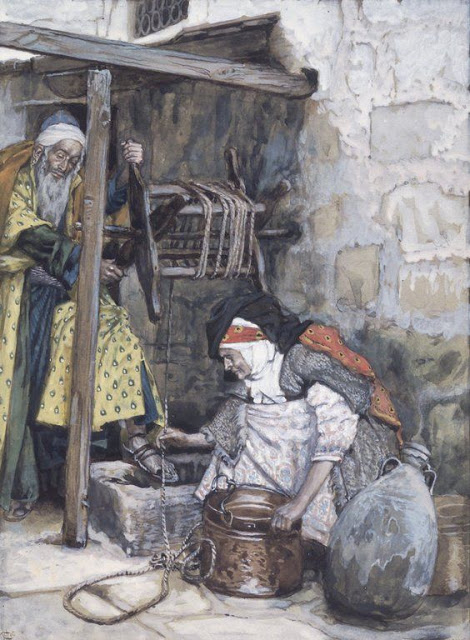
Zachariah & Elizabeth – Parents of Saint John the Baptist
One day, whilst in the Temple, Zachariah was visited by the angel Gabriel who told him that his wife, Elizabeth, would give birth to a son and they were to name that son John.
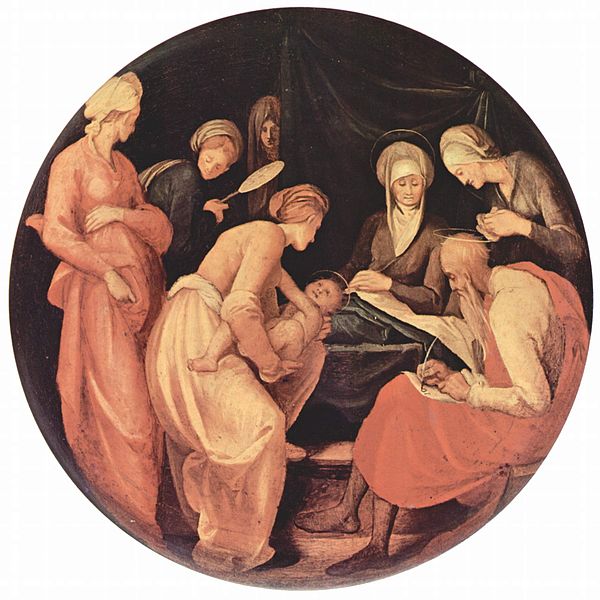
Jacapo Carucci, known as Jacapo da Pontormo – Zachariah writing “I name this child John”
The Angel of the Desert
Born in Judea, six months before Jesus, Saint John the Baptist, grew up to realize he had been chosen by God to prepare the people for the coming of The Messiah by turning them away from sin and baptizing them.
John could be seen roaming the wilderness of the desert, dressed in camel’s hair clothing, eating locust and wild honey, preaching his message and owing to this, he is sometimes called “The Angel of the Desert” and is often depicted on icons as having wings.
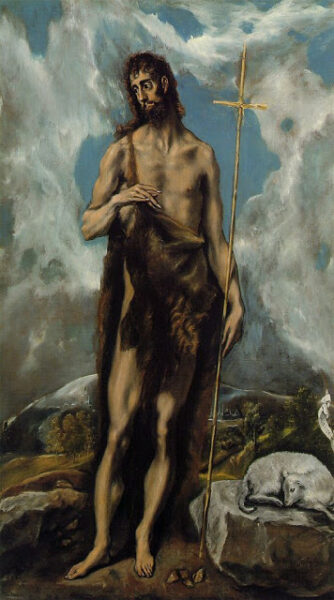
Saint John – El Greco
John meets Jesus
As John’s fame grew, Jesus heard about this man who had become a phenomenon, sought him out and became one of his followers.
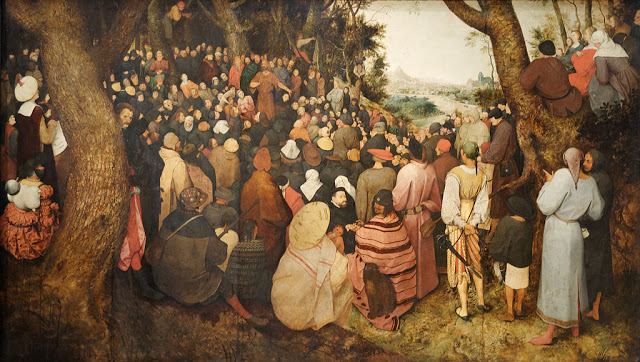
“The Preaching of St. John the Baptist” – Pieter Bruegel the Elder
John baptized Jesus, along with many others, in the River Jordan.
Today, we celebrate the baptism of Jesus Christ as Epiphany on the sixth of January.
John Loses his head

“The Beheading of Saint John the Baptist” – Puvis de Chavannes
John’s downfall came when Herod had him thrown into prison for publically accusing him of divorcing his wife, Phasaelis and unlawfully marrying his brother Philip’s wife, Herodias.
When at Herod’s Birthday celebration, Salome, Herodias’s daughter, danced for Herod, he was so delighted he exclaimed that he would reward her with anything her heart desired.

Salome Dancing Before King Herod, 1887 by George Rochegrosse
After discussing Herod’s offer with her mother, Salome requested from Herod, the head of Saint John the Baptist.
Herod was hesitant to do Salome’s bidding but he was a man of his word and so Saint John the Baptist lost his head.

Lili Marberg as Salome by Leopold Schmutzler (1864 – 1940).
The Relics of John the Baptist
According to The Greek Orthodox Church, after his death Saint John the Baptist went to Hades (Ancient Greek underworld) where he continued to preach the coming of The Messiah, so being the Forerunner of Jesus Christ, in both life and death.

Greek Orthodox Church of St John the Baptist. Jerusalem. Photo courtesy of Jeff Rozwadowski.
John the Baptist is said to have been be buried at Sebaste in Samaria but after the place was desecrated, around 362, his relics were taken to Jerusalem and later, to Alexandria, in Egypt.
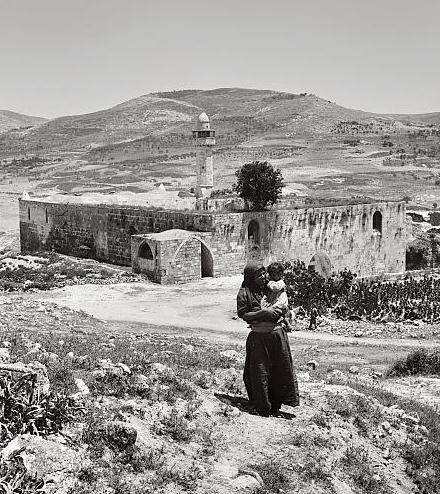
Nabi Yaha Moaque Sebastia – Traditional burial place of Saint John the Baptist.
The head of John the Baptist is said to have either been buried in the fortress of Machaerus (Jordan) or at Herod’s palace in Jerusalem.

Relic; Saint John the Baptist’s Head – Amiens Cathedral, France.
Other relics, found during the reign of Constantine, are said to have been taken to Emesa in Western Syria and hidden where they were allegedly found in 453.
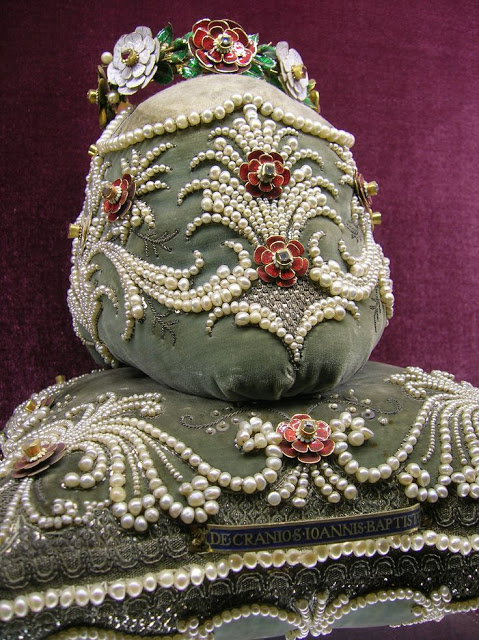
Skull of Saint John the Baptist – Munich
If claims are to be believed John the Baptist was a man of many heads and a multitude of hands!
Locations where the head of the Baptist is to be found are:
Damascus: The Great Mosque of Damascus
Rome: San Sivestro in Capite
Munich: Residenz Munich, former Royal Palace of Bavaria.Antioch, Uncertain where, exactly.
France: Amien Cathedral, (Said to be taken there by The Knights Templar).
England: The Parish Church of Tenterden, Kent.
England:Halifax, West Yorkshire.
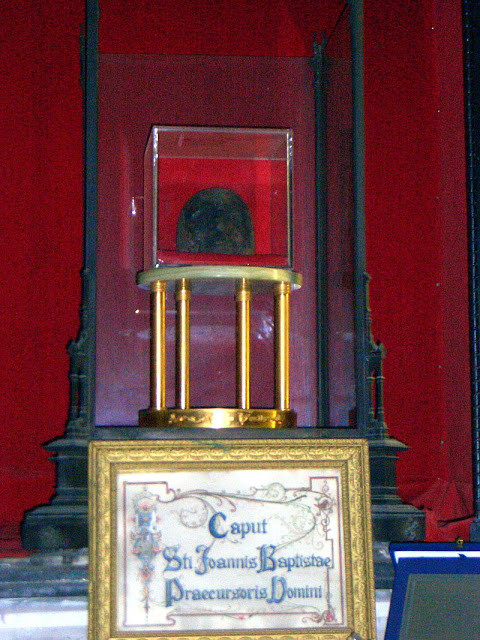
Head of Saint John the Baptist – Rome
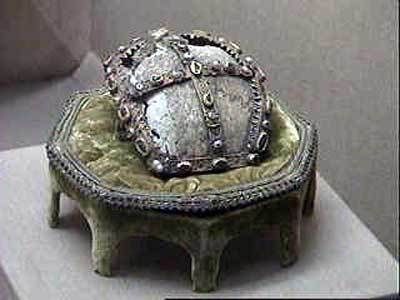
Head of Saint John the Baptist – Topkapi Palace.Istanbul.Turkey
The right hand of John the Baptist, the hand with which he baptized Jesus Christ, can be found in the following places:
Montenegro: Serbian Orthodox Monastery.
Turkey:Topkapi Palace, Istanbul.
Greece: Mount Athos (The Holy Mountain).
The left hand of John the Baptist can be found in:
West Bengal: Armenian Apostolic Church of Saint John.
Egypt: Monastery of Saint Macarius the Great.
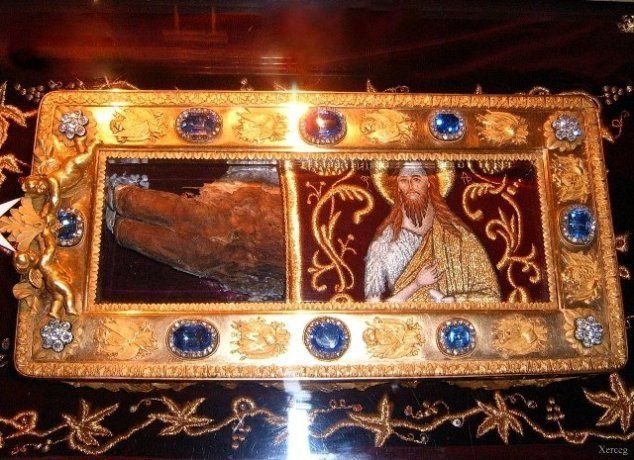
Right Hand of Saint John the Baptist – Cetinje Monastery. Montenegro.
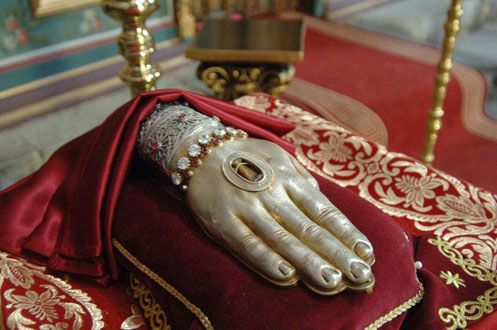
Bone fragment of Saint John the Baptist’s hand, encased in silver – Photo; John Canning
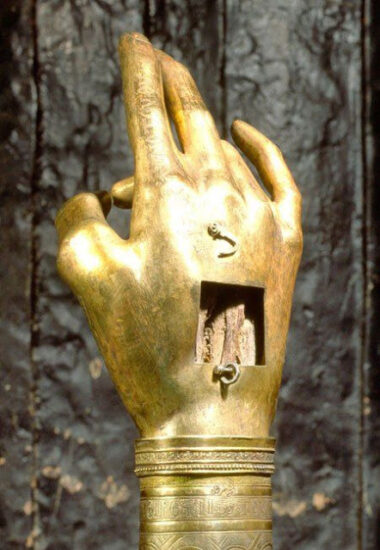
Right hand of Saint John the Baptist – Topkapi Palace. Istanbul. Turkey.
In 2010 bones were unearthed in the ruins of the Bulgarian Church of Saint John on the Black Sea island of Saint Ivan, which, when the DNA was tested two years later, proved to be the bones of a Middle Eastern man of the first century AD.
These relics (below) a knuckle, a tooth, part of a skull, a rib and a forearm bone, are now kept in Saints Cyril and Methodius Cathedral, Sozopol, Bulgaria.

Relics of Saint John the Baptist – Found on The Black Sea island of Saint Ivan.
Head of John the Baptist allegedly in Halifax West Yorkshire, England!
The most surprising claim of all, one that I have never heard of, is that the Head of John the Baptist is to be found in my neck of the woods; West Yorkshire!
The head of John the Baptist appears on the official coat of arms of Halifax.
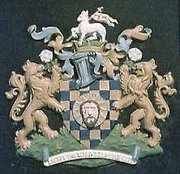
The coat of Arms of Halifax, West Yorkshire, England – Depicting the head of John the Baptist.
A legend recorded in the late sixteenth century, in William Camden’s “Britannia”, states that the name Halifax derives from; “Halig”, holy, and “Fax”, face.
William Camden states that the first religious settlers brought with them the face or head of John the Baptist.
Apparently not only in life did John the Baptist spread himself around but in death also!
The “Yiannis” (Greek version of the name John) all over the world, celebrate their Name Day on seventh of January.
Yiannis is such a popular name in Greece that there is a saying:
“There’s not a house in Greece that doesn’t have a Yiannis” and my house is no exception!

My son John
I’ll take this opportunity to wish my very own Yiannis; my son John, a Happy Name Day:
“Xronia Polla – Happy Name Day Johnny!”
Related links:
Saints and Celebrations of the Greek Orthodox Church


